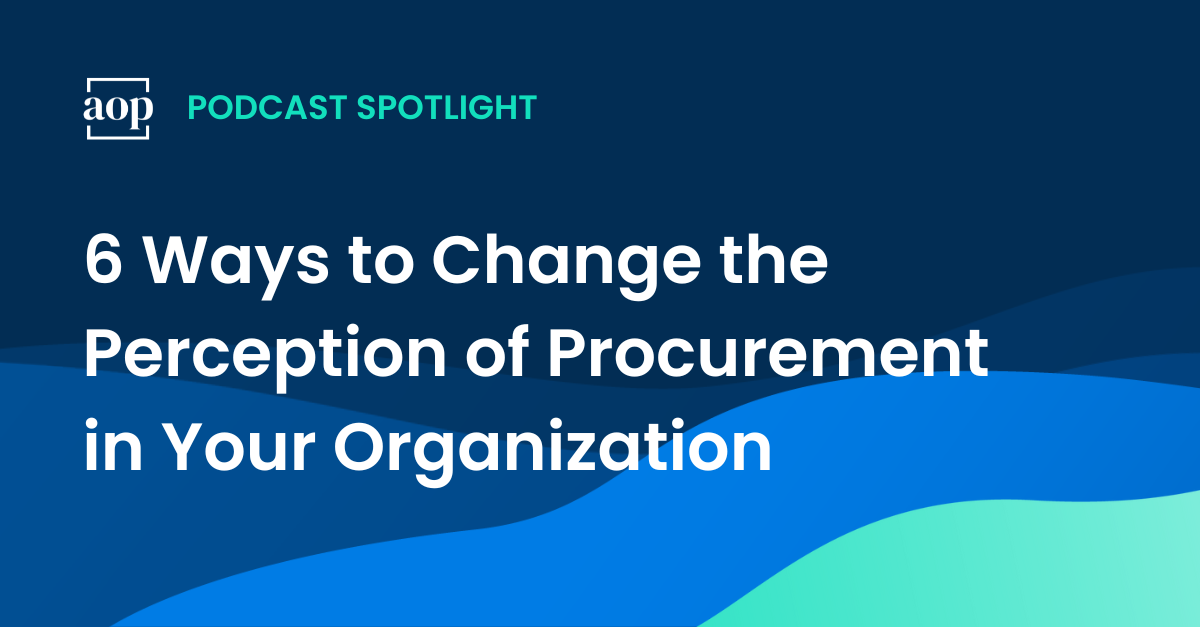
Building a strong internal brand for procurement is critical not only to how the function is perceived and received across an organization, but it’s also critical for boosting performance and overall success. Negative perceptions can hinder their ability to generate buy-in, create value, or have that value understood and recognized by stakeholders.
To overcome these challenges, procurement must take a marketer’s approach to improving brand perception. Investing in procurement’s internal brand will make it possible to generate the support and collaboration required to have a positive impact on the business.
We spoke with marketing and branding expert Katherine McCleery about the ways procurement can leverage branding best practices to build a strong internal perception of the procurement team, their function, and the value that they bring to stakeholders and to the business.
Here are her 6 top ways to launch a successful procurement rebrand:
Ask for feedback
To improve procurement’s brand, first understand how they are perceived by others throughout the business. Procurement can’t make positive reputation changes unless they solicit open, honest feedback about how others feel about them.
This can be achieved through a Net Promoter Score (NPS) survey or other methods for gathering stakeholder feedback. It’s most important to be honest and recognize what needs to change before making a plan for rebranding.
Establish (or re-establish) trust with stakeholders
After collecting feedback, seek out deeper conversations with stakeholders who hold the most negative brand perceptions to better understand their perspectives, needs, goals, and challenges.
Don’t shy away from difficult conversations. By being open to constructive criticism and honest feedback, procurement can begin to improve these relationships, leading to increased buy-in and better collaboration.
Apply a customer-centric mindset
Apply the same customer-centric approach to nurturing relationships with internal stakeholders as with external suppliers. Prioritize the stakeholder experience and continuously look for ways to optimize and improve that relationship so they feel their needs are being met.
When procurement is perceived as approachable, accessible, and transparent, stakeholders feel more comfortable reaching out to collaborate.Procurement should let stakeholders know they welcome these interactions, and this should help to dispel any misconceptions or concerns that stakeholders may have about procurement’s role within the organization.
Align voice, tone, and values with the organization
Procurement’s brand shouldn’t be in opposition to or at odds with the overall brand of the organization – their mission, tone, and values should align. They should embody the company’s culture and be able to tie their values and mission back to the overall brand and mission of the business, remaining consistent across the procurement team and over time as the program scales.
Developing a procurement mission statement that everyone on the team speaks to and uses in the same way can help align everyone on messaging and improve procurement’s reputation.
Communicate procurement’s impact
Results matter, but if stakeholders are not aware of those results or their downstream impact, procurement can’t improve their perceived value. Find regular opportunities to celebrate wins and make sure everyone throughout the organization understands and values the impact that procurement has on their business unit and the organization’s overall health and success.
Use brand evangelists wisely
Brand evangelists – stakeholders who champion and advocate for procurement – can be very helpful for creating a strong brand and reputation. But, Katherine advises, don’t get complacent even if you have one or two very vocal colleagues advocating on behalf of procurement. If those people leave the organization, then procurement will lose that positive reinforcement as well. Instead, focus on getting support from as many advocates as possible. This will allow procurement to build a sustainable and scalable evangelist network that’s impermeable to changes in the organization. Everyone needs to understand the function, value, and impact of the procurement team. .
To hear more from Katherine about the opportunity that exists at the intersection of procurement and branding, listen to How to Know When Procurement Needs a Rebrand on the Art of Procurement podcast.




